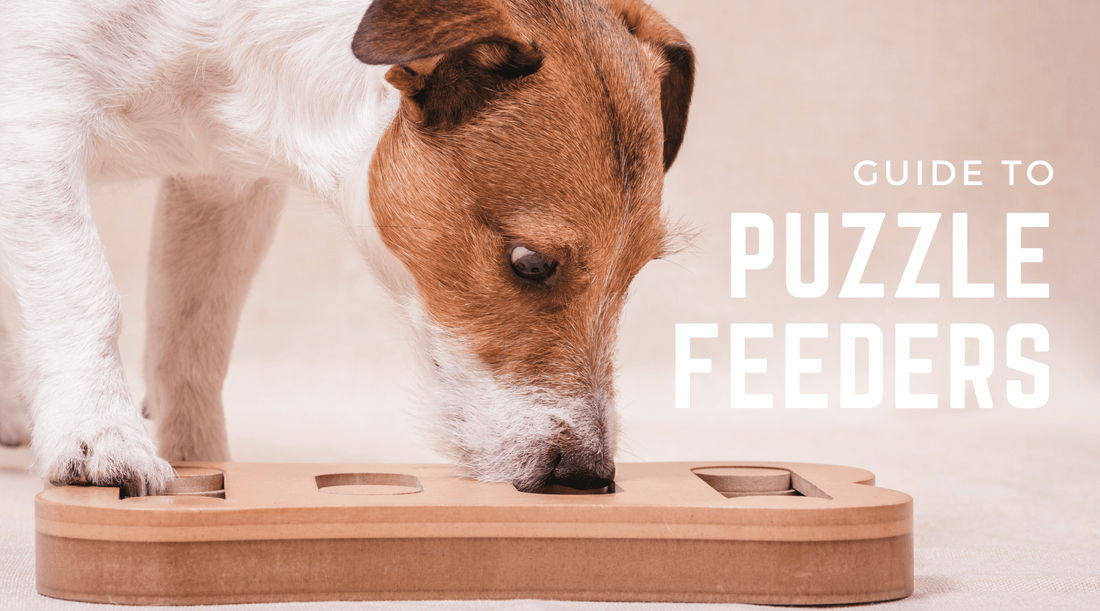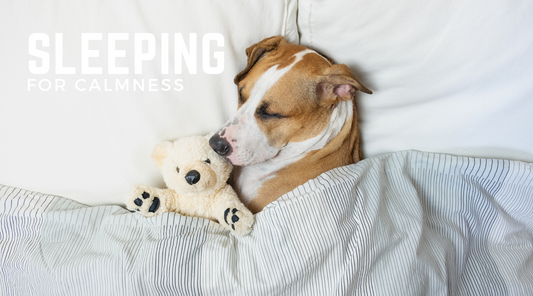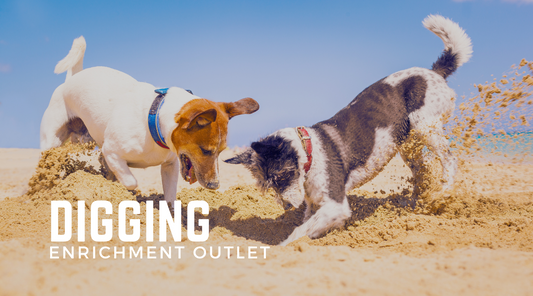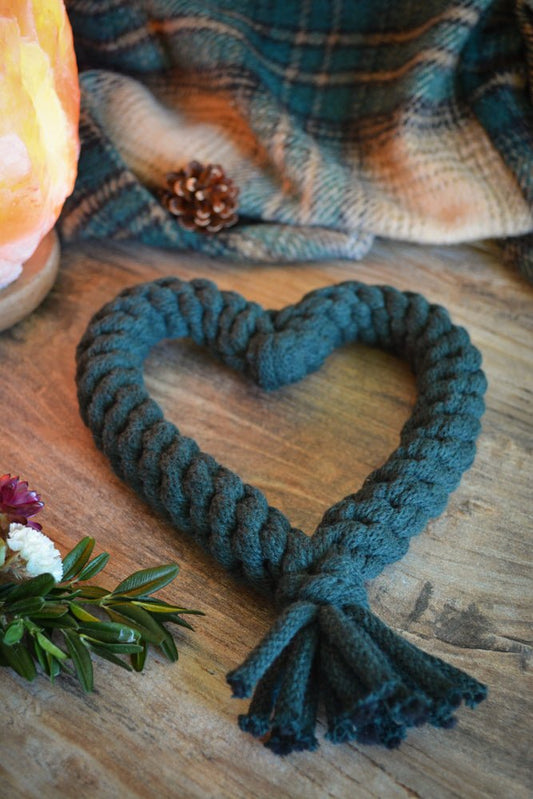
Dog Puzzle Feeders: Enrichment or Hype?
Dog puzzle feeders are becoming increasingly popular and there are various options available, from slow feeding bowls to treat dispensing toys to cognitive puzzles.
Many come with the tagline of providing your dog with enrichment and mental stimulation.
…But are they enriching, or are companies jumping on a trend?

What's the point of puzzle feeders?
We first need to clarify the purpose.
When offering puzzles and enrichment toys, it's important to qualify whether an activity is indeed enriching.
Let's take slow feeding bowls, for example. Slow feeders prolong mealtimes for dogs that otherwise gulp down food, which can help to prevent bloat. However, they provide limited enrichment.
We need to make sure we’re not confusing ‘occupying’ our dogs with enrichment.
Just because an activity takes time doesn’t automatically make it worthwhile.

I think where the waters can get muddied is that something that occupies our dog is helpful to us, rather than being something our dog wants to do.
There's a significant difference between making food rewarding to obtain versus making it frustrating to obtain.
That’s not to say all puzzles and slow feeding methods are frustrating, but it is important to be aware of this.
For an activity to be enriching, it needs to:
- Be mentally stimulating by engaging the brain in problem-solving and decision-making.
- Offer an outlet for natural behaviour, such as predatory play (orienting, mouthing, dissecting, etc).
- Be a self-soothing activity, such as sniffing, chewing and licking.
So, do slow feeders and puzzle toys offer this?
You can use the above checklist to think about what behaviour the puzzle or toy facilitates.
Some puzzle feeders are more complex than others. They have compartments to open and slides to push to access the food. This challenges your dog to work out how to get the food, which offers problem-solving.
While I have a few interactive puzzle toys, I also like to use homemade options out of household items, including boxes, toilet roll tubes, blankets, etc. This way I can adjust the activity to provide variety, which keeps it mentally stimulating.

The other good element to homemade options is that your dog can dig through that box, shake that parcel, rip that cardboard, and figure out how to manoeuvre differently shaped objects…
There are a lot more behaviours you can facilitate.
If you need any ideas or instructions, there’s a whole Puzzle category in the Enrichment Deck. That should give you enough options to keep it fresh and engaging.

Other slow feeding options that would also be more enriching for dogs include scatter feeding or search games, such as creating a trail or providing an ‘egg hunt’.
If you are looking specifically for a toy that your dog can play with independently, the Puzzle Plait is my most popular toy.
I created this for my spaniel as an alternative to pulling the fuzz off tennis balls and it works well for dogs that love to de-stuff their soft toys.

So why are these types of puzzle toys or slow feeding activities so much more enriching?
Sniffing is mentally stimulating for dogs and can have a calming effect. Calm sniffing is the optimal ‘sweet spot’ activity because it provides both mental and physical exercise for dogs (deep sniffing engages the body) - without creating overarousal.
Overarousal is a common challenge with hunting breeds that find prey scent adrenaline-inducing. You’ll often find these dogs working themselves into a frenzy to find the source of the scent (such as a rabbit). Working breeds, such as spaniels, are specifically bred for their ability to keep on, which means they are often extremely determined in their quarry.
The outcome of this can be overarousal, if not directed productively. They either find the source of the scent and chase it, which is not fair to wildlife, or they don’t find it, which is frustrating and they run themself ragged every walk.
This is why we need to provide appropriate outlets for predatory play.
It means we can give them that productive direction, lessening their need to go off and self-serve, as well as ensure they ‘complete the loop’ (achieve the reward).
Take scatter feeding. It’s a short, fulfilling loop of sniff-eat-sniff-eat.

Or, with the Puzzle Plait, dogs can:
- Pounce
- Grab
- Wrestle
- Shake
- Parade
- Drag the toy around
- ...Before settling down to mimic ‘dissecting prey’.
It offers multiple parts of the predatory sequence for dogs to engage in, so this is a more well-rounded, fulfilling, and rewarding activity.
So those are some things to think about when offering puzzle feeders.
Beyond understanding the theory, how do we know this?
How can I know if puzzle feeders are right for my dog?
Well, it’s because we can confirm choice with our dog.
Choice is a vital component of enrichment.
If we give our dog the same puzzle feeder or treat dispensing toy for each meal, they don’t get to make that choice. They are taking part in the activity out of necessity.
Hungry can drive frustration, so timing is key.
Take lick mats, for example. While lick mats are more of a slow feeder (they don't really have a puzzle element), they are a good example of how an activity can either be fulfilling or frustrating.
On one hand, lick mats provide the opportunity for self-soothing behaviour. Licking can be calming for dogs and the tasty food is rewarding. They are handy to use as a 'cool down' activity post-walk or at the vets, grooming or bathing (some have suctions to stick to the bath).
However, a lick mat could feel frustrating if a dog is hungry.
Therefore, I like to offer lick mats with bonus treats. This way, it’s an optional extra. It’s a choice.
Or, if you feed wet food, place a portion of the food on top of the mat for easy access so that your dog can eat that first before getting down to the lick portion.
As my dog gets his main meals in the morning and evening, I tend to offer a puzzle feeder during the middle of the day with some bonus treats, or some of his food scrimped from each meal.
If calories are a concern, you could look at low-calorie options such as cucumber cubes.
How should I setup my dog's puzzle feeders?
Lastly, the puzzle feeder should be rewarding.
If you feed dry food, this is probably low-to-medium value in your dog’s eyes.
Your dog eats it every day, so it lacks a novelty factor. So it’s our job to make obtaining that food more engaging.
True enrichment shouldn’t get ‘boring’.
If a dog doesn’t want to engage with a particular toy or activity, then they may be confused (in which case, make it easier and show them what to do) or they lack the motivation.
Increasing the value of the reward could increase motivation, but it’s fine if it doesn’t. It tells you that this activity doesn’t do it for them and that’s OK..
Enrichment is about what your dog finds enriching, so learning, observing and experimenting is part of the process.
Do they look happy and motivated, or do they seem unsure and unsettled?
Signs of frustration and unease may include:
- Verbal signs (whining, barking)
- Pacing
- Licking or chewing their paws
- Yawning
- Turning away
- Switching off from engaging with you or the activity altogether.
My spaniel gets so much sniffing time out of his Puzzle Feeder Plait, so he’s always excited to get hold of it. The little prance he does is adorable.
While spaniels are generally up for anything, it’s usually easy enough to see if a dog is having fun.
How complex should the puzzle be?
A final note…
Enrichment doesn’t need to be a complex challenge.
Throw some puzzles into the mix, but don’t get bogged down with “it needs to be harder, harder, harder”.
If your dog completes a puzzle quickly and easily, reset it and do a few rounds. This is good for confidence.
Just look at scatter feeding - it’s easy, increases sniffing and provides frequent rewards. Even the highest energy dog can happily scatter feed.
‘Quick and easy’ doesn’t invalidate an enrichment activity.
The better qualifier is: Does it provide a behavioural outlet?








1 comment
What a fantastic blog. So informative, I actually learnt a lot from it and will be very useful for my two dogs who are very different in their play/interest and ability with challenge toys. I’m so grateful, I’ve just ordered two of your plaits and really look forward to using them. Thank you.Pauline